JVC KENWOOD 475701 UHF DIGITAL TRANSCEIVER User Manual
JVC KENWOOD Corporation UHF DIGITAL TRANSCEIVER Users Manual
Users Manual

B5A-0922-00 (K)
USER GUIDE
GUIDE DE L'UTILISATEUR
GUÍA DEL USUARIO
TK-D740H
TK-D740HV
TK-D840H
TK-D840HU

USER GUIDE
VHF DIGITAL TRANSCEIVER
TK-D740H
TK-D740HV
UHF DIGITAL TRANSCEIVER
TK-D840H
TK-D840HU
This User Guide covers only the basic operations of your radio. Ask
your dealer for information on any customized features they may
have added to your radio. For using details instruction manual (User
Manual), refer to the following URL.
http://manual2.jvckenwood.com/en_contents/search/

2
THANK YOU
We are grateful you have chosen KENWOOD for your Digital Transceiver
applications.
CONTENTS
NOTICES TO THE USER ..........................................................................3
PRECAUTIONS ....................................................................................4
TERMINAL DESCRIPTIONS .....................................................................5
UNPACKING AND CHECKING EQUIPMENT ....................................................6
SUPPLIED ACCESSORIES ........................................................................................... 6
PREPARATION ....................................................................................7
ORIENTATION .....................................................................................9
FRONT/ REAR PANEL .................................................................................................. 9
DISPLAY .................................................................................................................... 10
BASIC OPERATION ............................................................................. 11
SWITCHING POWER ON/ OFF ................................................................................... 11
ADJUSTING THE VOLUME ........................................................................................ 11
SELECTING A ZONE AND CHANNEL ......................................................................... 11
TRANSMITTING ........................................................................................................ 11
RECEIVING ................................................................................................................ 11

3
NOTICES TO THE USER
• Government law prohibits the operation of unlicensed radio transmitters within the territories
under government control.
• Illegal operation is punishable by fi ne and/or imprisonment.
• Refer service to qualifi ed technicians only.
Safety: It is important that the operator is aware of, and understands, hazards
common to the operation of any transceiver.
• EXPLOSIVE ATMOSPHERES (GASES, DUST, FUMES, etc.)
Turn OFF your transceiver while taking on fuel or while parked in gasoline service stations. Do
not carry spare fuel containers in the trunk of your vehicle if your transceiver is mounted in the
trunk area.
• INJURY FROM RADIO FREQUENCY TRANSMISSIONS
Do not operate your transceiver when somebody is either standing near to or touching the
antenna, to avoid the possibility of radio frequency burns or related physical injury.
• DYNAMITE BLASTING CAPS
Operating the transceiver within 500 feet (150 m) of dynamite blasting caps may cause them
to explode. Turn OFF your transceiver when in an area where blasting is in progress, or where
“TURN OFF TWO-WAY RADIO” signs have been posted. If you are transporting blasting caps
in your vehicle, make sure they are carried in a closed metal box with a padded interior. Do not
transmit while the caps are being placed into or removed from the container.
One or more of the following statements may be applicable:
FCC WARNING
This equipment generates or uses radio frequency energy. Changes or modifications to this
equipment may cause harmful interference unless the modifications are expressly approved by the
party responsible/ JVC KENWOOD. The user could lose the authority to operate this equipment if
an unauthorized change or modification is made.
INFORMATION TO THE DIGITAL DEVICE USER REQUIRED BY THE FCC
This equipment has been tested and found to comply with the limits for a Class B digital device,
pursuant to Part 15 of the FCC Rules. These limits are designed to provide reasonable protection
against harmful interference in a residential installation.
This equipment generates, uses and can generate radio frequency energy and, if not installed and
used in accordance with the instructions, may cause harmful interference to radio communications.
However, there is no guarantee that the interference will not occur in a particular installation. If
this equipment does cause harmful interference to radio or television reception, which can be
determined by turning the equipment off and on, the user is encouraged to try to correct the
interference by one or more of the following measures:
• Reorient or relocate the receiving antenna.
• Increase the separation between the equipment and receiver.
• Connect the equipment to an outlet on a circuit different from that to which the receiver is
connected.
• Consult the dealer for technical assistance.
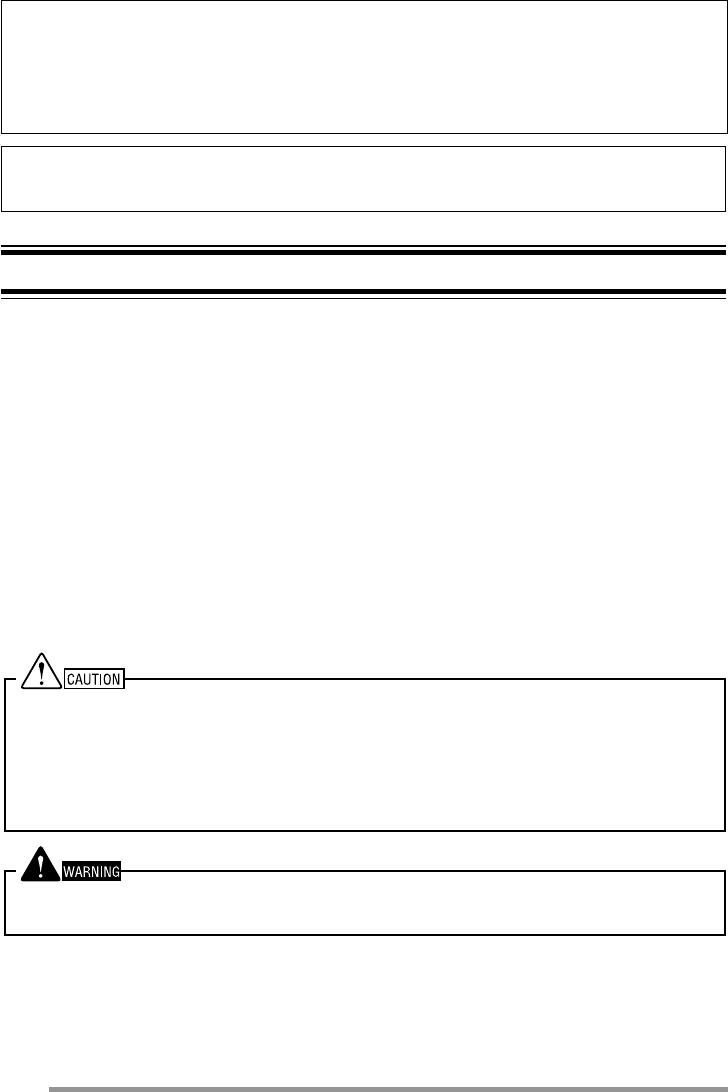
4
The AMBE+2TM voice coding Technology embodied in this product is protected by intellectual
property rights including patent rights, copyrights and trade secrets of Digital Voice Systems, Inc.
This voice coding Technology is licensed solely for use within this Communications Equipment.
The user of this Technology is explicitly prohibited from attempting to extract, remove, decompile,
reverse engineer, or disassemble the Object Code, or in any other way convert the Object Code into
a human-readable form. U.S. Patent Nos. #6,199,037, #6,912,495, #8,200,497, #7,970,606, and
#8,359,197
Firmware Copyrights
The title to and ownership of copyrights for firmware embedded in KENWOOD product memories
are reserved for JVC KENWOOD Corporation.
PRECAUTIONS
Observe the following precautions to prevent fi re, personal injury, and transceiver
damage.
• Do not attempt to confi gure the transceiver while driving; it is too dangerous.
• Do not disassemble or modify the transceiver for any reason.
• Do not expose the transceiver to long periods of direct sunlight, nor place it near heating
appliances.
• If an abnormal odor or smoke is detected coming from the transceiver, switch the transceiver
power off immediately, and contact your KENWOOD dealer.
• Use of the transceiver while you are driving may be against traffi c laws. Please check and
observe the vehicle regulations in your area.
• Do not use options not specifi ed by KENWOOD.
• Do not put the plastic bag used for packing of this equipment on the place which reaches a small
child's hand. It will become a cause of suffocation if it wears fl atly.
• Do not place the transceiver on unstable surfaces.
• Keep the volume as low as possible to protect your hearing.
• Always switch the transceiver power off before installing optional accessories.
• The transceiver operates in 12 V negative ground systems only! Check the battery polarity and
voltage of the vehicle before installing the transceiver.
• Use only the supplied DC power cable or a KENWOOD optional DC power cable.
• Do not cut and/or remove the fuse holder on the DC power cable.
• Do not place the microphone cable around your neck while near machinery that may catch the
cable.
For passenger safety, install the transceiver securely using the supplied mounting bracket and
screw set so the transceiver will not break loose in the event of a collision.

5
TERMINAL DESCRIPTIONS
ACC (D-SUB 15 Pin Connector)
Pin No. Name I/O Description Specifi cation
1 SB O DC Power (Switched B) Output 13.6 V ±15% Max. 1 A
2 IGN I Igintion Signal Input Min. Input: 10.8 V
Max. Input: 16.0 V
3 SP2/PA O Loudspeaker Output/ Public Address Output 4
4 DETO O RX Detected Audio Output 280 mVp-p (typ.)
5 DATAI I TX Data Input 100 k
6 FNC1/ TXD I/O Programmable/ PC Serial Data from Radio High Impedance
7 FNC2/ RXD I/O Programmable/ PC Serial Data to Radio High Impedance
8 FNC3 I/O Programmable High Impedance
9 FNC4 I/O Programmable High Impedance
10 FNC5 I/O Programmable High Impedance
11 FNC6 I/O Programmable High Impedance
12 50MC O DC Power Output 5 V, Max 100 mA
13 HR1 I Horn Alert Signal Input Max 2 A
14 HR2 O Horn Alert Signal Output Max 2 A
15 GND — Ground Ground
Speaker Jack (3.5 mm Phone Jack) 4 W/ 4
Pin No. Name I/O Description Specifi cation
1 SPO O External Speaker Output 4
3 GND — Ground Ground
DC Input Connector
Pin No. Name I/O Description Specifi cation
Red B I DC Power Input 13.6 V ±15%
Black GND I Ground Ground
Microphone Jack
Pin No. Name I/O Description Specifi cation
1 MBL O MIC Backlight Control High Impedance
2 SB O DC Power (Switched B) Output 13.6 V ±15%
3 GND — Ground Ground
4 PTT/ TXD I/O PTT/ PC Serial Data from Radio High Impedance
5 ME — Mic Ground Ground
6 MIC I Mic Signal Input 600
7 HOOK/ RXD I Hook/ PC Serial Data to Radio High Impedance
8 DM I/O Mic Data Detection High Impedance
Antenna Terminal
50 impedance

6
UNPACKING AND CHECKING EQUIPMENT
Note:
• The following instructions are for use by your KENWOOD dealer, an authorized KENWOOD
service facility, or the factory.
Carefully unpack the transceiver. We recommend that you identify the items listed
below before discarding the packing material. If any items are missing or have
been damaged during shipment, fi le a claim with the carrier immediately.
SUPPLIED ACCESSORIES
DC power cable (with fuses) . . . . . . . . . . . . . . . . . . . . . . . . . . . . . . . . . . . . . . . . . . . . . 1
• 15 A fuse. . . . . . . . . . . . . . . . . . . . . . . . . . . . . . . . . . . . . . . . . . . . . . . . . . . . . . . . . . . . . . . . . . . 2
Mounting bracket. . . . . . . . . . . . . . . . . . . . . . . . . . . . . . . . . . . . . . . . . . . . . . . . . . . . . . 1
Screw set
• 5 x 16 mm self-tapping screw . . . . . . . . . . . . . . . . . . . . . . . . . . . . . . . . . . . . . . . . . . . . . . . . . . . 4
• M4 x 6 mm hex-headed screw with washer . . . . . . . . . . . . . . . . . . . . . . . . . . . . . . . . . . . . . . . . 4
• Spring washer. . . . . . . . . . . . . . . . . . . . . . . . . . . . . . . . . . . . . . . . . . . . . . . . . . . . . . . . . . . . . . . 4
• Flat washer . . . . . . . . . . . . . . . . . . . . . . . . . . . . . . . . . . . . . . . . . . . . . . . . . . . . . . . . . . . . . . . . . 4
Microphone (with cable)
• KMC-30 <TK-D740H/ TK-D840H> . . . . . . . . . . . . . . . . . . . . . . . . . . . . . . . . . . . . . . . . . . . . . . . 1
• KMC-35 <TK-D740HV/ TK-D840HU>. . . . . . . . . . . . . . . . . . . . . . . . . . . . . . . . . . . . . . . . . . . . . 1
• Microphone hanger (with 4 x 16 mm self-tapping screws) . . . . . . . . . . . . . . . . . . . . . . . . . . . . . 1
User guide. . . . . . . . . . . . . . . . . . . . . . . . . . . . . . . . . . . . . . . . . . . . . . . . . . . . . . . . . . . 1

7
PREPARATION
Various electronic equipment in your vehicle may malfunction if they are not properly protected
from the radio frequency energy which is present while transmitting. Typical examples include
electronic fuel injection, anti-skid braking, and cruise control. If your vehicle contains such
equipment, consult the dealer for the make of vehicle and enlist his/her aid in determining if they
will perform normally while transmitting.
■ Connecting the power cable
The transceiver operates in 12 V negative ground systems only! Check the battery polarity
and voltage of the vehicle before installing the transceiver.
1 Check for an existing hole, conveniently located in the fi rewall, where the
power cable can be passed through.
• If no hole exists, use a circle cutter to drill a hole, then install a rubber grommet.
2 Run the power cable through the fi rewall and into the engine compartment.
3 Connect the red lead to the positive (+) battery terminal and the black lead
to the negative (–) battery terminal.
• Place the fuse as close to the battery as possible.
4 Coil the surplus cable and secure it with a retaining band.
• Be sure to leave enough slack in the cables so the transceiver can be removed
for servicing while keeping the power applied.
■ Installing the Transceiver
For passenger safety, install the transceiver securely using the supplied mounting bracket and
screw set, so the transceiver will not break loose in the event of a collision.
Note:
• Before installing the transceiver, check how far the mounting screws will extend below the
surface. When drilling mounting holes, be careful not to damage vehicle wiring or parts.
1 Mark the position of the holes in the dash, using the mounting bracket as a
template. Using a 4.2 mm (5/32 inch) drill bit, drill the holes, then attach the
mounting bracket using the supplied screws.
• Mount the transceiver within easy reach of the user and where there is suffi cient
space at the rear of the transceiver for cable connections.
2 Connect the antenna and the supplied power cable to the transceiver.
3 Slide the transceiver into the mounting bracket and secure it using the
supplied hex-headed screws.
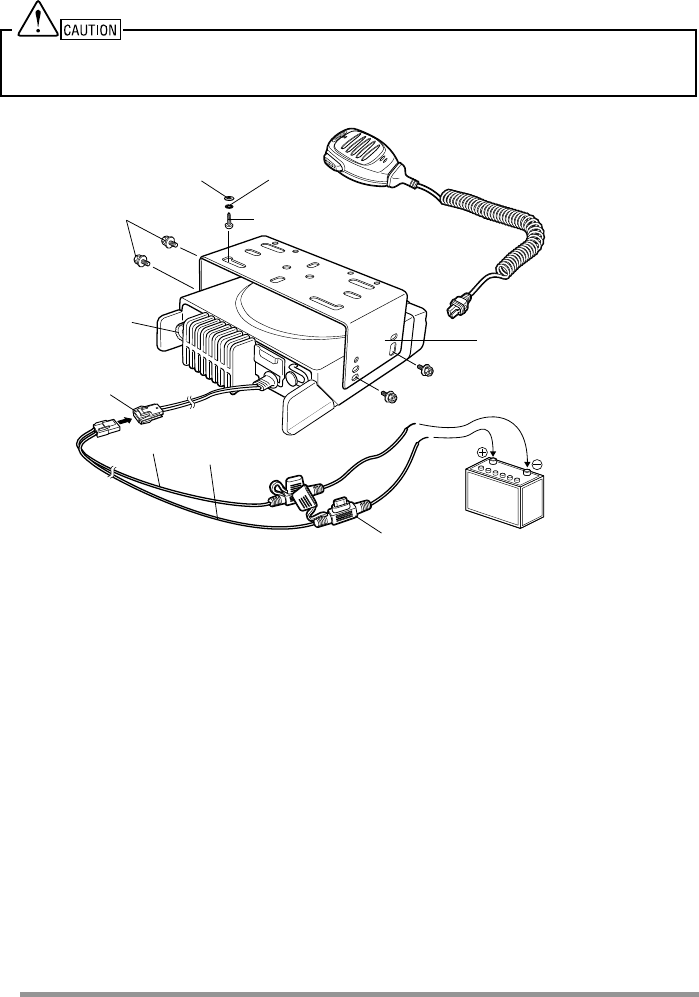
8
4 Mount the microphone hanger in a location where it will be within easy
reach of the user.
• The microphone and microphone cable should be mounted in a place where
they will not interfere with the safe operation of the vehicle.
When replacing the fuse in the DC power cable, be sure to replace it with a fuse of the same
value. Never replace a fuse with one that is rated with a higher value.
M4 x 8 mm
Hex-headed screw
DC power cable
Mounting bracket
Antenna connector
Power input
connector
Fuse
Black (–) cable
Red (+) cable
12 V vehicle
battery
Microphone
5 x 16 mm Self-tapping
screw
Spring
washer
Flat
washer
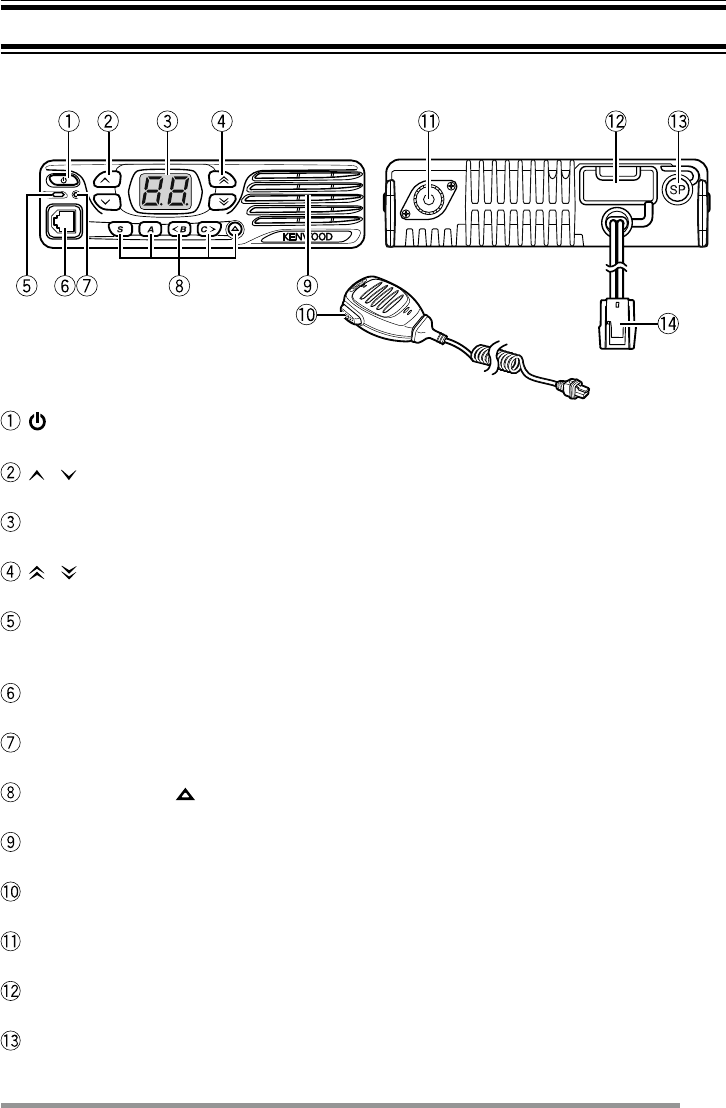
9
ORIENTATION
FRONT/ REAR PANEL
ACC.
(Power) switch
Press to switch the transceiver ON or OFF.
/ keys
Press to activate their programmable functions.
Display
Refer to page 9.
/ keys
Press to activate their programmable functions.
TX/RX Indicator
Lights red while transmitting. Lights green while receiving a signal. Flashes
orange when receiving an optional signaling call.
Microphone jack
Insert the microphone plug into this jack.
Status Indicator
Lights during a specifi ed mode, based on dealer programming.
S / A / <B / C> / keys
Press to activate their programmable functions.
Speaker
Internal speaker.
PTT switch
Press this switch, then speak into the microphone to call a station.
Antenna connector
Connect the antenna to this connector.
ACC connector
Connect the ACC to this connector, via the KCT-60.
External speaker jack
Connect an external speaker to this jack.
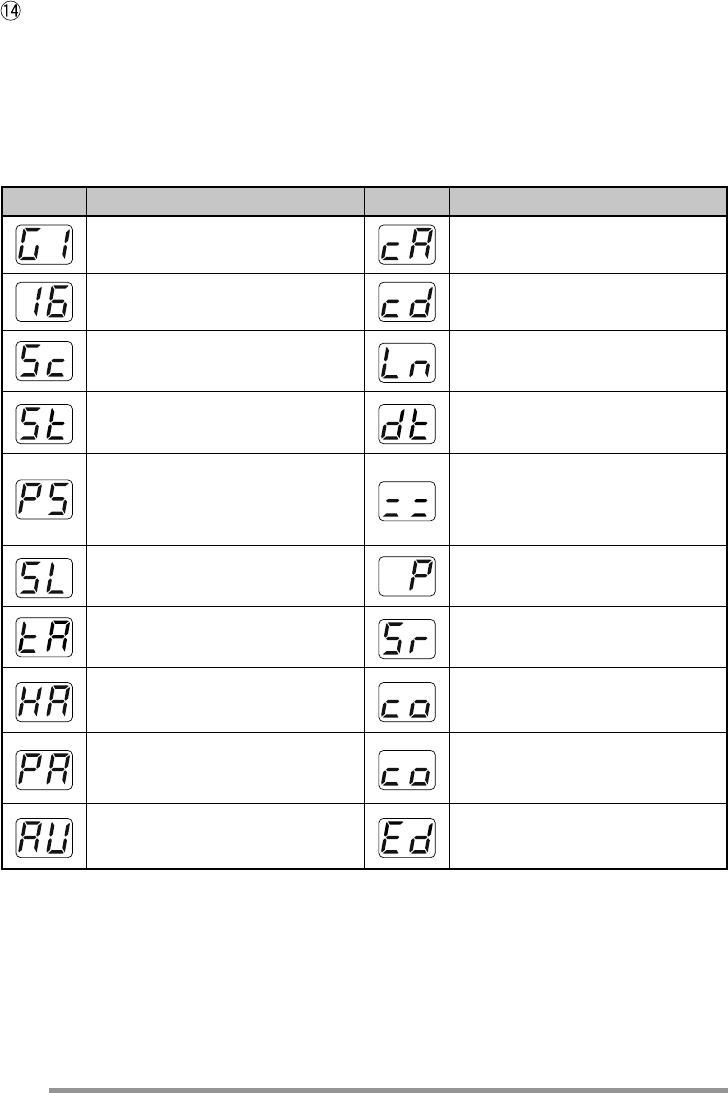
10
Power input connector
Connect the DC Power Cable to this connector.
DISPLAY
The display shows the zone/ channel number and the 2 dots show various modes
of operation.
Display Description Display Description
Zone Display (Zone 1) Appears when a channel is
added to the scan list. (cA)
Channel Display (Channel 16) Appears when a channel is
removed from the scan list. (cd)
Appears during Scan. (Sc) Appears when the Lone Worker
function is activated. (Ln)
Appears during the transceiver is
stunned. (St) Appears during Send Data (dt)
Appears when switch the
transceiver ON.
The Transceiver Password
function is programmed. (PS)
Appears during the channel is
busy.
Appears when the Squelch Level
setting is activated. (SL)
The selected channel is the
Priority channel. (P)
Appears when the Talk Around
function is activated. (tA)
Appears when the Scrambler
function is activated. (Sr)
Appears when the Horn Alert
function is activated. (HA)
Appears when the Scrambler
code mode is activated. (co)
Appears when the Public
Address function is activated.
(PA)
Appears when the Scrambler
code mode is activated. (co)
Appears when the AUX function
is activated. (AU)
Appears when the Message is
completed. (Ed)

11
BASIC OPERATION
SWITCHING POWER ON/ OFF
Press [] to switch the transceiver ON.
Press [] again to switch the transceiver OFF.
ADJUSTING THE VOLUME
Press the key programmed as [Volume Up] to increase the volume. Press the
key programmed as [Volume Down] to decrease the volume.
SELECTING A ZONE AND CHANNEL
Select the desired zone and channel using the keys programmed as [Zone Up]/
[Zone Down] and [Channel Up]/ [Channel Down].
• “G1” (Zone 1)/ “16” (Channel 16) appears on the display.
TRANSMITTING
1 Select the desired zone and channel.
2 Press the key programmed as [Monitor] or [Squelch Off] to check whether or
not the channel is free.
• If the channel is busy, wait until it becomes free.
• For best sound quality at the receiving station, hold the microphone approximately
1.5 inches (3 cm to 4 cm) from your mouth.
RECEIVING
Select the desired zone and channel. If signaling has been programmed on the
selected channel, you will hear a call only if the received signal matches your
transceiver settings.
Receiving Group Calls
When you receive a group call and the received group ID matches the ID set up
on your transceiver, you can hear the caller’s voice.
Receiving Individual Calls
When you receive an individual call, a ringing tone will sound and the caller’s ID
will appear on the display. To respond to the call, press and hold the PTT switch
and speak into the transceiver as you would during a normal transmission.

© 2015
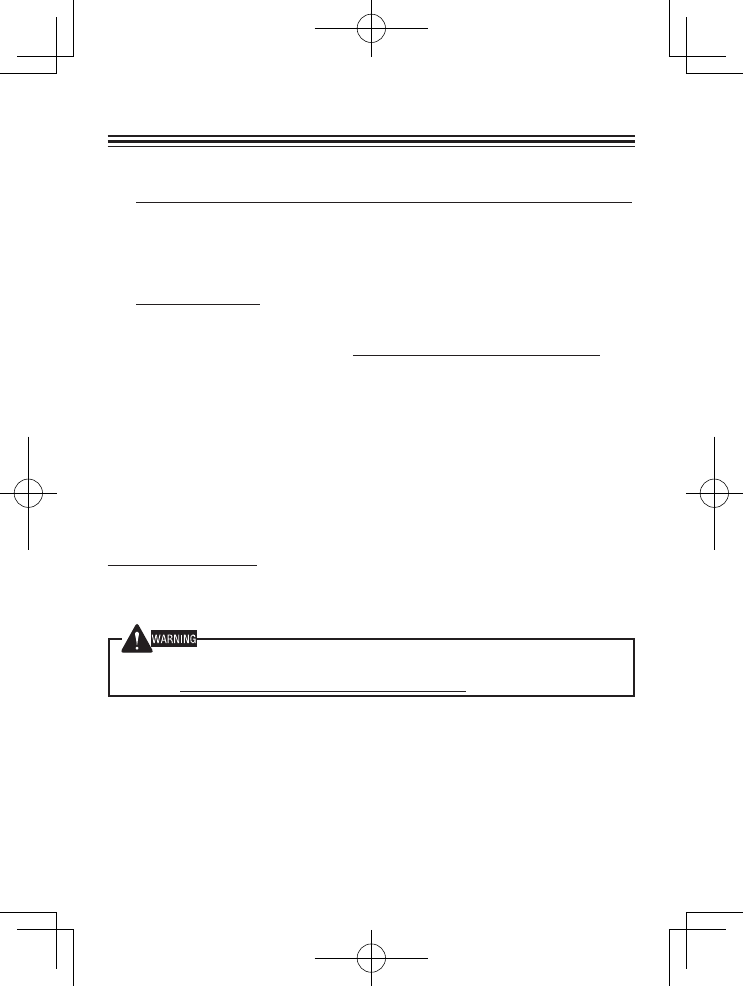
MANDATORY SAFETY INSTRUCTIONS TO INSTALLERS AND USERS
• Use only manufacturer or dealer supplied antennas.
• Antenna Minimum Safe Distance: 40 cm (16 inches), 50% duty Cycle.
• Antenna Gain: 0 dBd referenced to a dipole.
The Federal Communications Commission has adopted a safety standard
for human exposure to RF (Radio Frequency) energy which is below the
OSHA (Occupational Safety and Health Act) limits.
•
Antenna Mounting: The antenna supplied by the manufacturer or radio
dealer must not be mounted at a location such that during radio transmission,
any person or persons can come closer than the above indicated minimum
safe distance to the antenna, i.e. 40 cm (16 inches) , 50% duty Cycle.
• To comply with current FCC RF Exposure limits, the antenna must
be installed at or exceeding the minimum safe distance shown
above, and in accordance with the requirements of the antenna
manufacturer or supplier.
•
Vehicle installation: The antenna can be mounted at the center of a
vehicle metal roof or trunk lid, if the minimum safe distance is observed.
• Base Station Installation: The antenna should be fixed-mounted on
an outdoor permanent structure. RF Exposure compliance must be
addressed at the time of installation.
Antenna substitution: Do not substitute any antenna for the one supplied
or recommended by the manufacturer or radio dealer.
You may be exposing person or persons to excess radio frequency radiation.
You may contact your radio dealer or the manufacturer for further instructions.
Maintain a separation distance from the antenna to person(s) of
at least 40 cm (16 inches), 50% duty Cycle.
“This transmitter is authorized to operate with a maximum duty factor of 50%, in
typical push-to-talk mode, for satisfying FCC RF exposure compliance requirements.”
You, as the qualified end-user of this radio device must control the exposure
conditions of bystanders to ensure the minimum separation distance (above) is
maintained between the antenna and nearby persons for satisfying RF Exposure
compliance. The operation of this transmitter must satisfy the requirements of
Occupational/Controlled Exposure Environment, for work-related use, transmit
only when person(s) are at least the minimum distance from the properly installed,
externally mounted antenna. Transmit only when people outside the vehicle are at
least the recommended minimum lateral distance away from the antenna/vehicle.
B59-2723-00